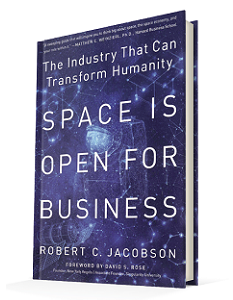Over the past couple of decades, we have witnessed a gradual change in ‘the way space is done’ – codified under what we now know as NewSpace – a movement celebrated by this book. Its author, an unapologetic proselytiser for space entrepreneurialism and investment, presents a compelling story of NewSpace development that should convince almost anyone that, as the title has it, space is open for business. The book’s subtitle - ‘the industry that can transform humanity’ – is rather more open to interpretation, but it’s par for the course in publishing hype.
The author presents his case in 28 short chapters grouped into seven sections that cover the historical background and development of NewSpace, investment in space, business models and policy aspects. The book is primarily designed as a “framework for those outside of the industry to understand its relevance and potential”.
Its pages are interspersed with quotes and ‘capsule biographies’ of a selection of space entrepreneurs and illustrated with black-and-white tables, diagrams and cartoons. The short, snappy delivery is clearly designed for those of limited powers of concentration, and therefore lacks a clear narrative direction, which leads to repetition (even down to those mini-biographies). However, for those who require additional background and detail, a 46-page reference section, 30-page glossary, 15-page index and other appendices make it a decent package.
This tentative accolade comes with a couple of caveats, however. Much of the appendix material appears to be a sweeping together of interview notes that could not be integrated into the main text; and this self-published book was funded by a couple of sponsors who get their own sections in said appendix. This doesn’t necessarily detract from the book’s usefulness, but I would have liked to have seen a more ‘up-front’ acknowledgement of the author’s own business model.
Somewhat tellingly, he writes at one point that readers might be “surprised” that his list of interviewees includes “not only engineering and finance mavens but experts in policy, law and the arts”. Quite frankly, the only reason for surprise is that so many other authors seem to miss this point, lacking perhaps an understanding that if we are to develop space in any meaningful way, all manner of interested parties must be included.
On balance, I would recommend that all budding space entrepreneurs read this book. They should, however, keep firmly in mind as they do so that this is predominantly a manual of positive thoughts (dare one say spin?). Although it does eventually tackle the spectre of “failure” in chapter 17, there is too little recognition of environmental issues such as orbital debris, which is expected to worsen as space development ramps up. So, at the same time as lapping at the fountain of NewSpace Kool-Aid, readers would be well-advised to seek out a grey-haired member of the space profession to get some perspective.











